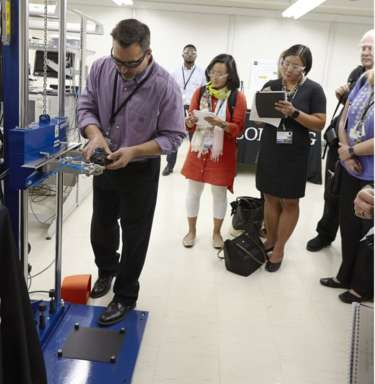Corning Gorilla glass 5: taking screen protection to another level
Shattered or cracked screens are the number one cause of smartphone repairs and customer complaints globally, Corning is one big company that have tried their best to limit this over the years with different versions of their Gorilla glass.
If you have a smartphone, odds are good that you’re touching Corning Gorilla Glass every day. This chemically strengthened glass has become a staple of the mobile industry. Currently, the material is used in more than 70% of smartphone screens, including on Samsung and Apple devices.
Gorilla Glass became the de facto standard on smartphone screens because it’s very hard. That makes it resistant to scratching. However, hardened materials can also still be brittle and prone to cracking. You can drag a knife across a phone screen without damage, but dropping it from waist-high can completely shatter it. This is the kind of damage Corning wants to prevent.
The last big update to Corning’s formula was in 2014 with Gorilla Glass 4. According to a BBC report yesterday, Corning has launched its next generation of Gorilla Glass - the Gorilla Glass 5. That’s a whole extra Gorilla! In all seriousness, this version of Gorilla Glass is designed to better survive drops that would crack lesser screens.
Gorilla Glass 4 only survived half of drops from one meter. Corning says that most drops in real life happen from higher than that, usually when people are taking the phone out of their pocket or taking a photo. According to Corning, Gorilla Glass 5 could survive more than 80% of drops from as high as 1.6 metres.
The new glass was tested on rough surfaces - a demo for journalists showed dummy phones being dropped from a height of 1.6 meters onto a sheet of sandpaper.
 |
| Corning Gorilla glass 5 lab demo |
Some of the phones tested survived over 20 hard drops in the lab. Typically, most phone drops are from between waist and shoulder height.
As well as drops, the company said it was twice at good at resisting scratches and other damage compared to what's currently on the market.
Device manufacturers are expected to unveil products with the new glass within the next few months.
Melting pot
"We've been working with our closest customers for quite some time now," Corning's vice president and general manager John Bayne told the BBC.
"And there's tremendous interest in this product for obvious reasons."
However, he warned that Corning had no control over eventual smartphone designs, meaning some models could be slightly weaker depending on the manufacture and design of the device. Corning's statistics were based instead on controlled lab conditions.
The company would not let the BBC test the glass outside of the lab.
Corning's work in specialist glass dates back to 1879, when it produced the glass used in the iconic Edison lightbulb.
By 2016, more than 4.5 billion devices use Gorilla Glass, which is created using a technique known as fusion forming. It involves placing the raw materials - sand and "other inorganic material" - into a melting pot.
It is then transferred to an isopipe, essentially a small trough, which is intentionally overfilled. The melted material spills out over both sides and combines underneath to form the sheet of glass.
This technique means there is no human contact needed in creating the glass, eliminating defects and removing the need to treat the glass afterwards.








0 comments:
Post a Comment
Click to see the code!
To insert emoticon you must added at least one space before the code.